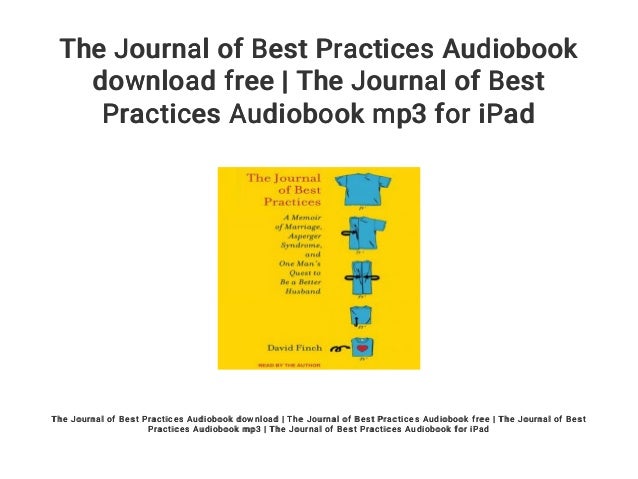The Journal Of Best Practices
From prioritizing your balance sheet to defining a standard operation, these tips will help your organization improve.
By Marc Ursick, CPA
Account reconciliation is an important task for many CPAs and CGMAs working in business and industry. While it already may be a familiar task, there is always room for improvement.
I’ve led many organizations through account reconciliation improvement projects. Below is a summary of key best practices I’ve learned—framed in sports-related terms to make them easier to remember.

Chaos would ensue if holes weren’t numbered and golfers could choose to play any hole they wanted at any time. The same holds true with a company’s account reconciliation process. One, standardized “best practice” should be identified, and the process should be the same for all parties involved. The Journal of Best Practices in Health Professions Diversity: Research, Education and Policy (J Best Pract Health Prof Divers) published by UNC Press is an enterprise of the School of Health Sciences at Winston-Salem State University. Its mission is to provide a forum for the discussion of factors that promote or constrain the development and sustainability of a diverse health professions. Filled with humor and surprising wisdom, The Journal of Best Practices is a candid story of ruthless self-improvement, a unique window into living with an autism-spectrum condition, and proof that a true heart can conquer all. Principles of Transparency and Best Practice followed by Edorium Journals: Website: Every journal has a modern, easy to navigate website. The websites are made ensuring high ethical and professional standards. An 'Aims & Scope' statement is separately included. Criteria for publication followed by the journal.
Prioritize your balance sheet
Also known as a “risk-based approach,” one key best practice within the reconciliations process is to identify the accounts that inherently have the greatest risk of error. When a football team prepares for a big game, do the coaches spend more time preparing their starting quarterback or the backup punter? The QB is much more important to the team’s success, so he obviously gets more attention. Similarly, accounting teams should spend more time during the close process reconciling important, high-risk accounts. A common approach to this is “risk-ranking” balance sheet accounts with a designation of high, medium, or low. A thorough and balanced analysis of both quantitative and qualitative factors of each individual account is required to place each account into a high, medium, or low risk rating. Ultimately, the risk rating of the account determines how often the account is reconciled (e.g., monthly, quarterly) as well as the due date of the reconciliation (e.g., business day 6).
Define a standard operation
Golf courses are a great example of a standardized, controlled operation. Every golfer playing a course follows the same process, teeing off on the first hole and completing the round on the 18th hole. Chaos would ensue if holes weren’t numbered and golfers could choose to play any hole they wanted at any time. The same holds true with a company’s account reconciliation process. One, standardized “best practice” should be identified, and the process should be the same for all parties involved. For example, organizations should standardize account reconciliation policy, process, and templates across the entire company.
Don’t try to be perfect
In bowling, it’s unlikely that every roll will be a strike. Similarly, not every reconciliation will be able to be reconciled to the penny. A common “quick win” improvement is to set tolerances and materiality thresholds across the organization. Rather than wasting time attempting to reconcile low dollar values, team members should work on other accounts or activities. Common thresholds that organizations set include unreconciled differences and required adjustments.
Utilize metrics to drive improvement
The Journal Of Best Practices Aspergers Test
As any sports fan knows, analytics are a huge part of modern games. Many coaches utilize advanced statistics to drive their game plans. Finance leadership should also utilize metrics for both performance measurement and to improve the reconciliation process in future periods. Common metrics that should be reviewed on a regular basis include overdue reconciliations, material reconciling items, and completeness by person or department. Based on these metrics, leadership can make adjustments to the process if needed (e.g., reallocate reconciliations among team members, change due dates, etc.).
Monitor the process
A team would be lost without its head coach keeping everybody on the same page. The same can be said about a reconciliation process without a monitoring lead. Contrary to popular belief, this person does not have to be management and the role is often a good way to develop “up and comers” in the organization. The main duties of the monitoring lead include tracking the completion status of all reconciliations, making sure they are finished on time and following up on incomplete or late reconciliations.
Utilize software to drive the process
The Journal Of Best Practices Summary
Technology—such as instant replay, ball and player tracking systems—has made a significant impact on sports in the modern era. Technology is also important in the account reconciliation space. Companies such as BlackLine, Trintech, and Hyperion are among those that have developed software to enable a “best practice” account reconciliation process. The key word is “enable,” as any technology implementation should be driven by related process design changes. Key features to look for in a tool include real-time dashboards, system-certification features, automated balance interfaces, and automated notifications to users.
Utilizing a combination of these best practices can help make your team winners during the reconciliation process.
Marc Ursick, CPA, is the founder of CLEARsulting.
A key feature of best practice documents is the review process by the community of experts. Only in this way can the many experiences of individuals be brought together in a single coherent best practices document. A peer review process for a journal, involving two or three reviewers and a journal’s editorial team, is obviously no substitute for the experience of a community of experts.

WHY A PEER REVIEWED JOURNAL?
The OBPS team identified a strong need for scientists and others interested in BP to have access to a specific journal specialising in Best Practices related publications. A dedicated journal promotes the visibility of Best Practices related work in the ocean community. It allows publications on methodologies for the whole field of ocean observing and addresses the challenges of improving observing capabilities (including observations, data management and applications) and interoperability.
OBPS joined forces with Frontiers in Marine Science to create a Research Topic entitled “Best Practices in Ocean Observing“ in the Ocean Observing section. All published content will be cross-archived in the OBPS repository, where users can link it to more complete technical documentation or videos.
HOW TO SUBMIT
Frontiers in Marine Scienceoffers a variety of article types. The most commonly used article types for the RT “Best Practices in Ocean Observing” are Review, Perspective, Original Research, Protocols, Technology and Code. Please choose the category that is most appropriate for the content of your submission.
We are committed to scientific ethics and aim to make methods that articles are based on as transparent as possible and therefore ask authors to:

- Provide persistent links to any data used in your article (e.g. data DOI). Please ensure data is hosted in a trusted and sustained repository, and has complete metadata.
- Provide persistent links to Manuals, Standard Operating Procedures, or other full methodological documents your article refers to. Authors are strongly encouraged to use a DOI issued by the OBPS. Please contact us for assistance in submitting documents to the system, should it be needed.
In case you are submitting a manuscript that is considered a “Best Practice Document” please add a section to the document manuscript that outlines the process of how community agreement was achieved.
SUBMISSION DEADLINE
The Journal Of Best Practices
A submission deadline is found on the Research Topic web page but it is extended at regular intervals.
For further information , contact the editorial team via the Research Topic web page, or email obpcommunity@oceanbestpractices.org.
The Journal Of Best Practices Book
Last updated: 22 June 2020

